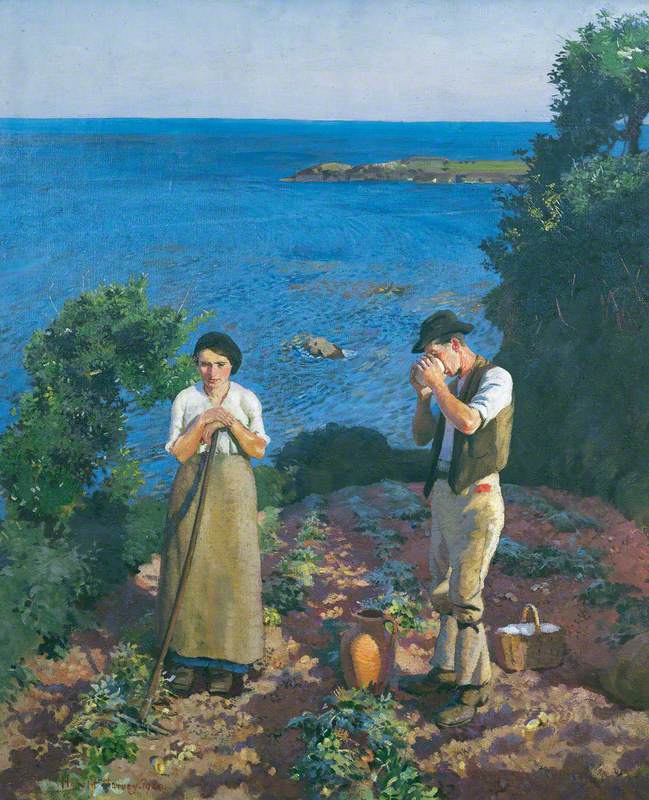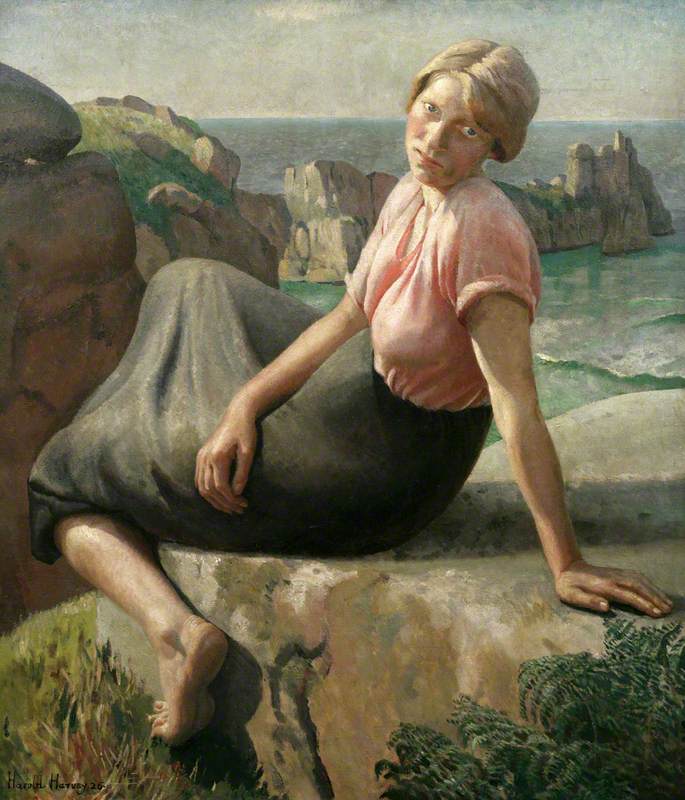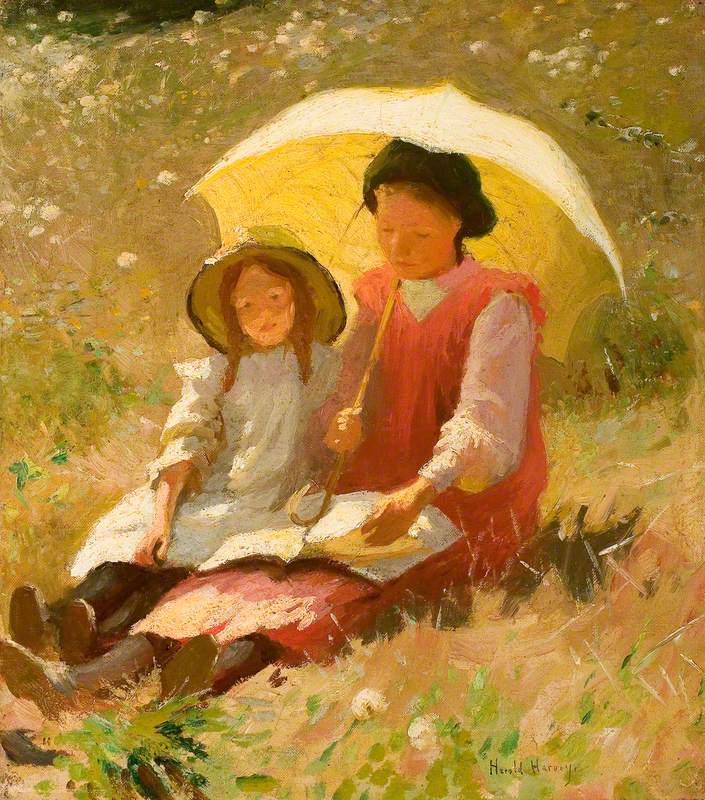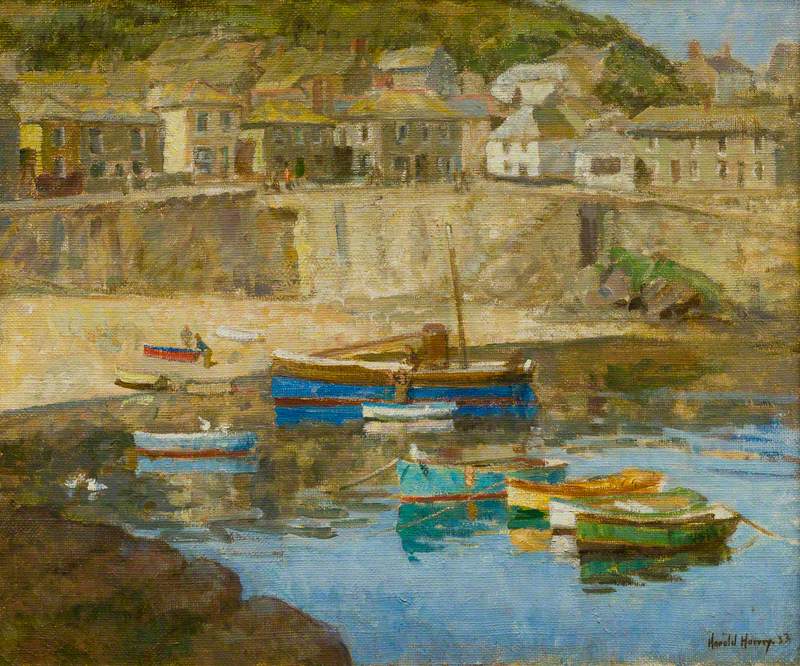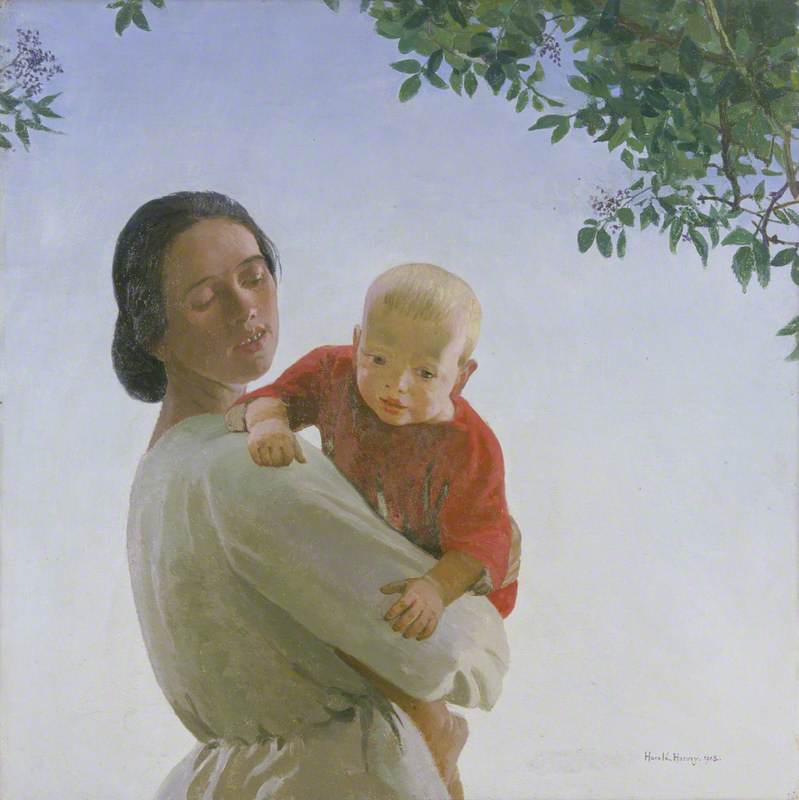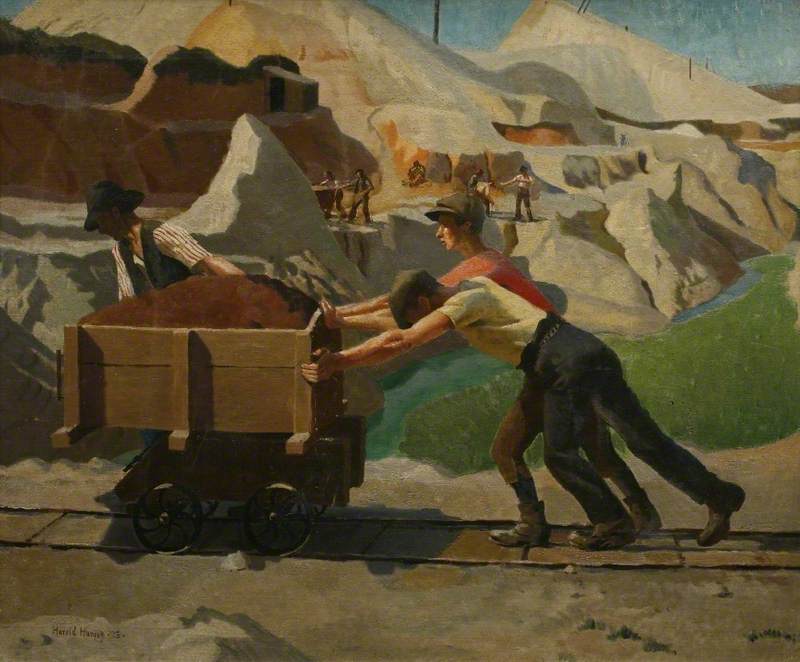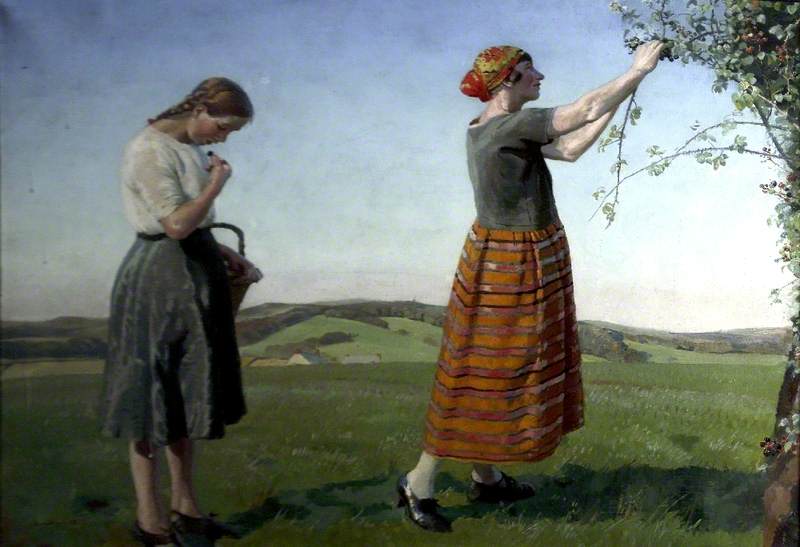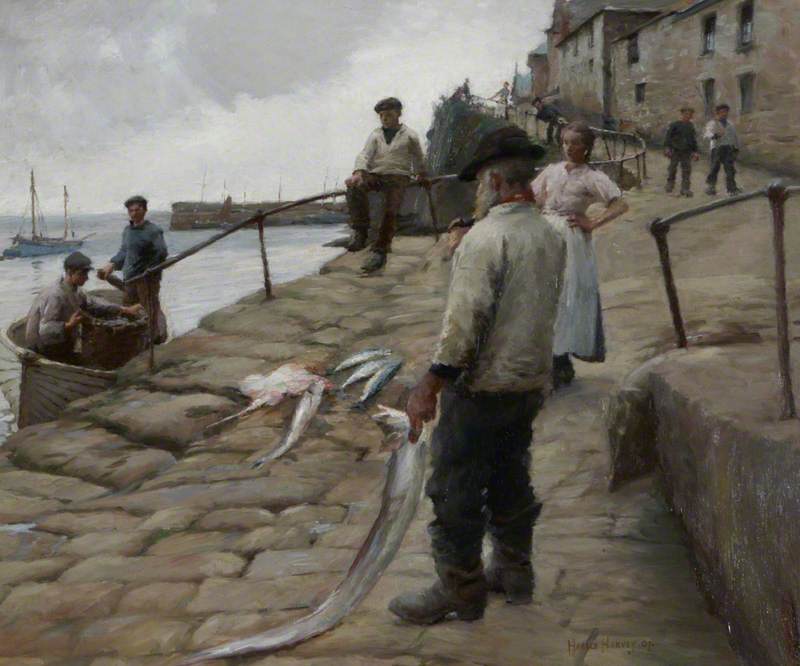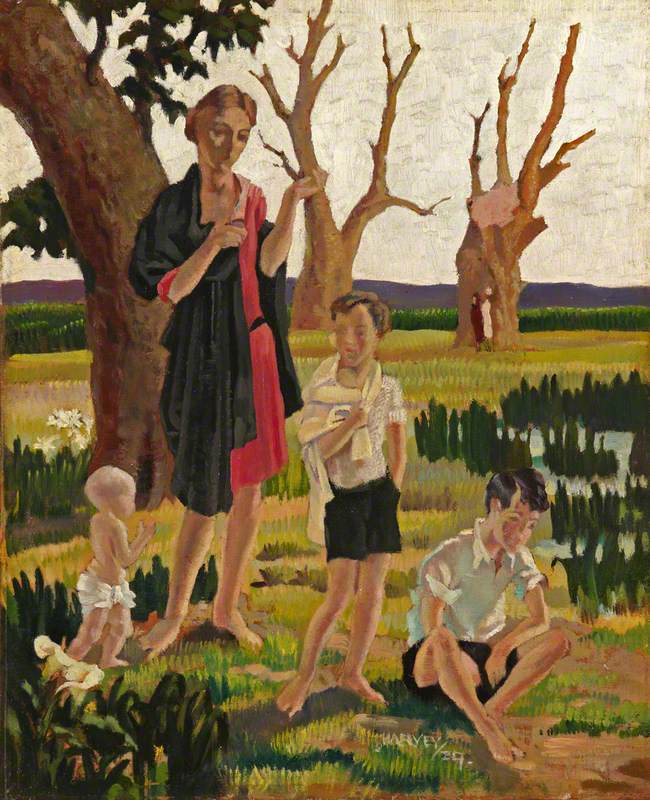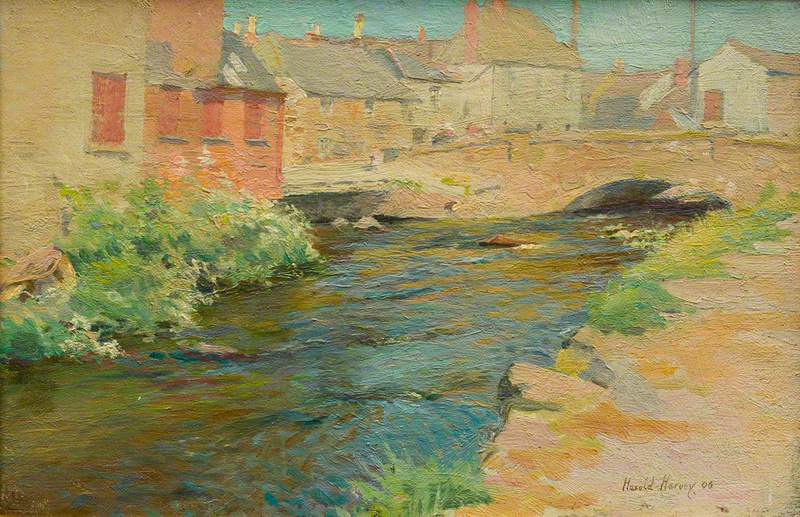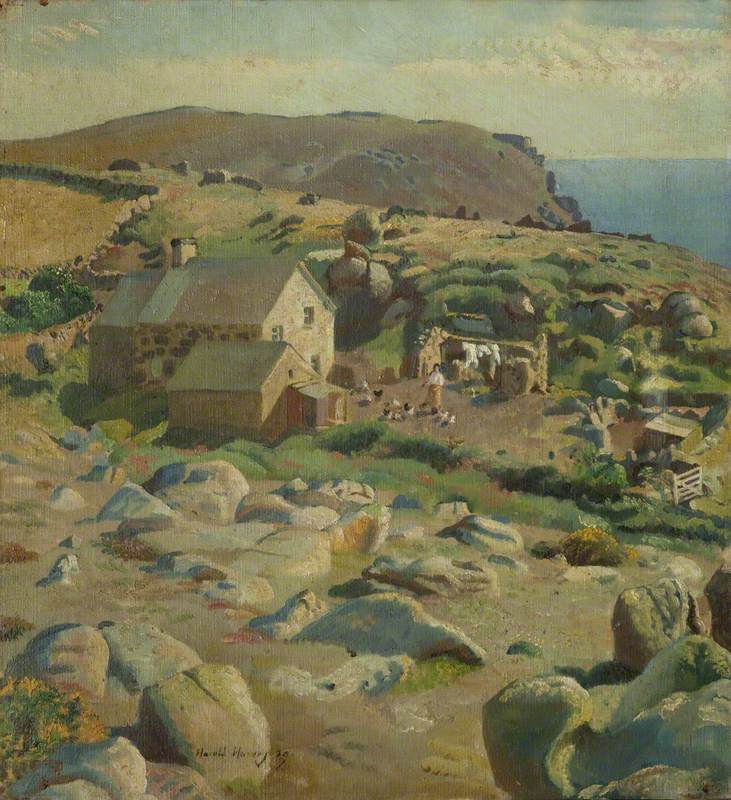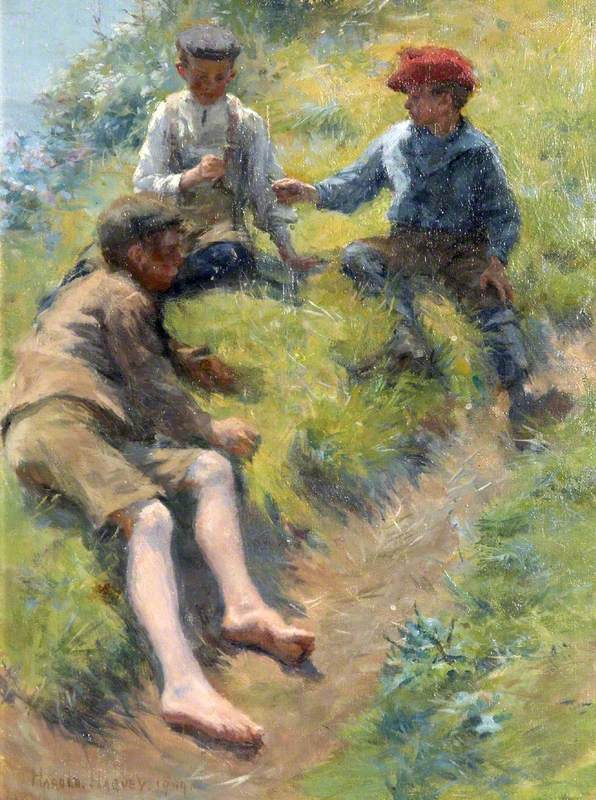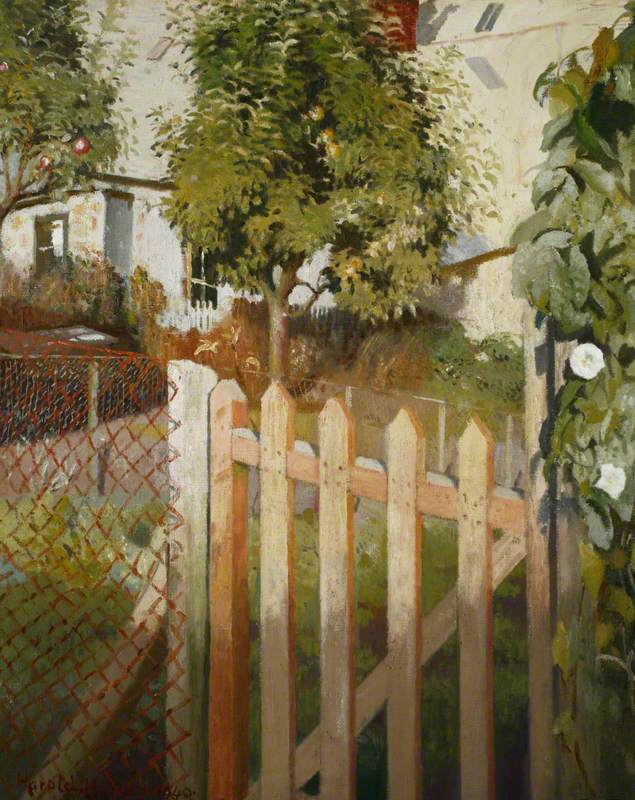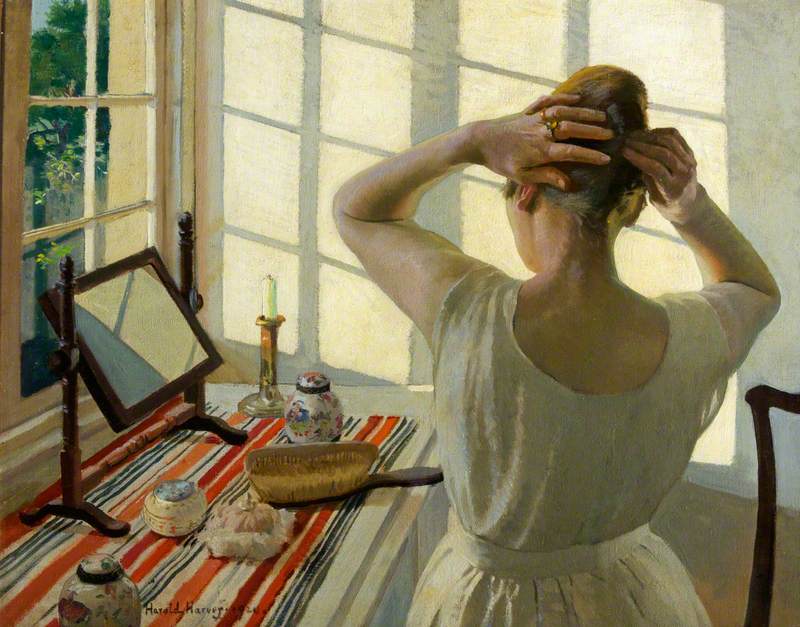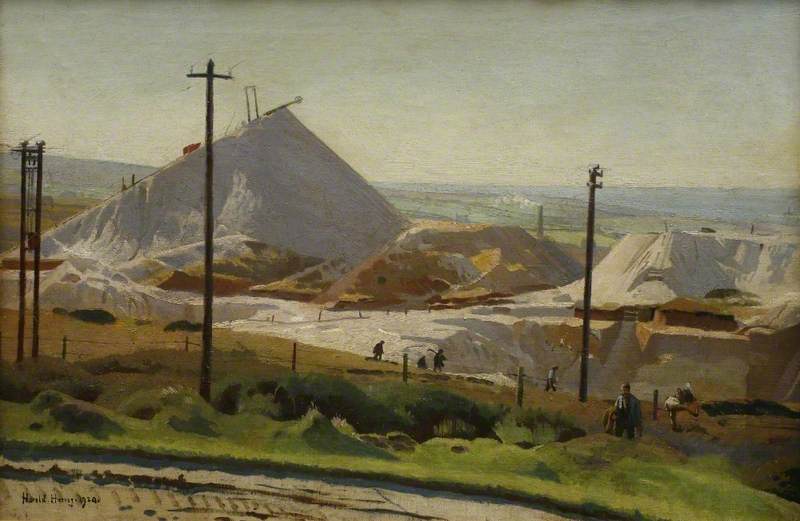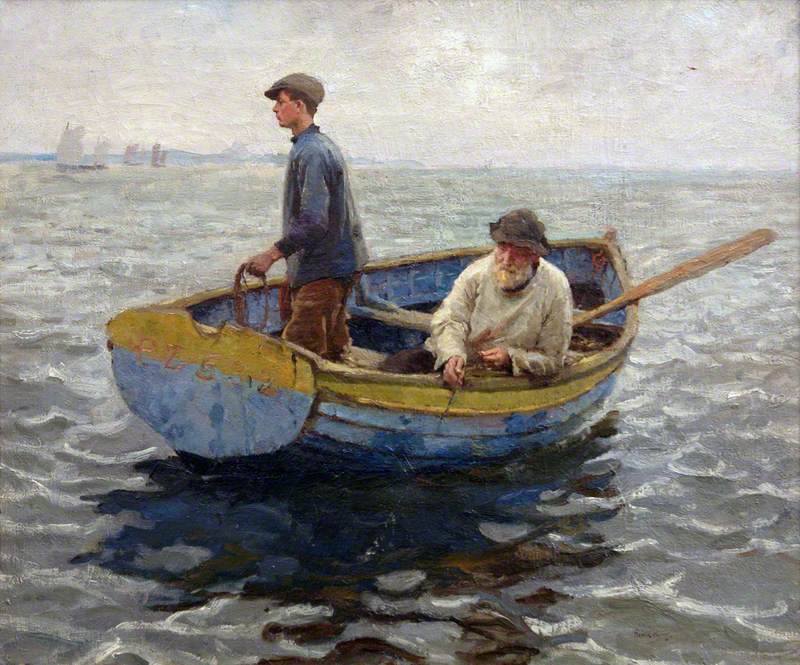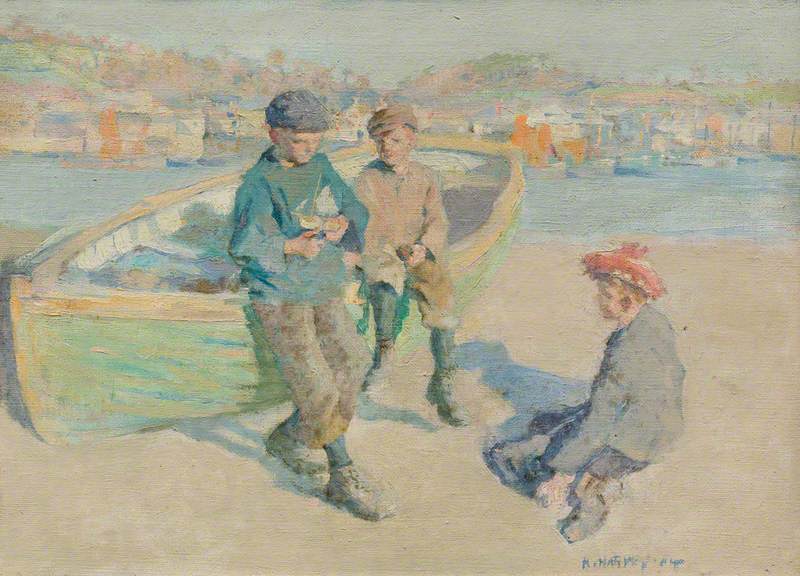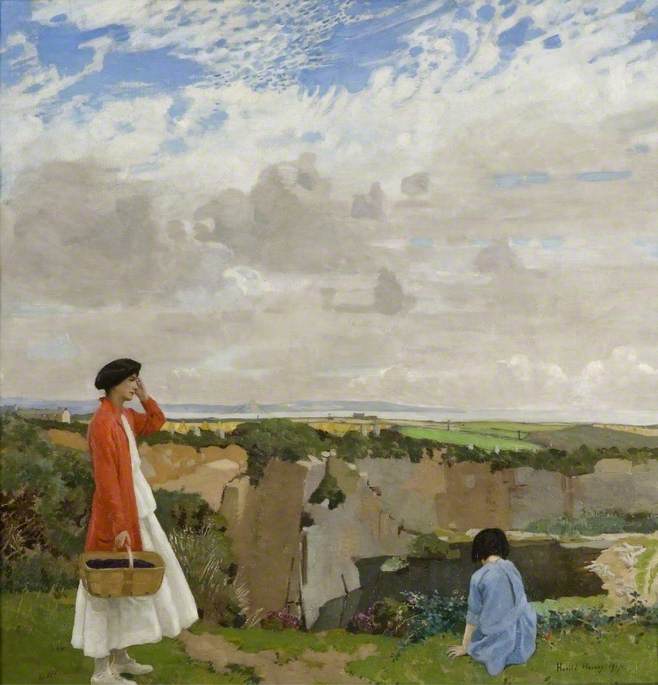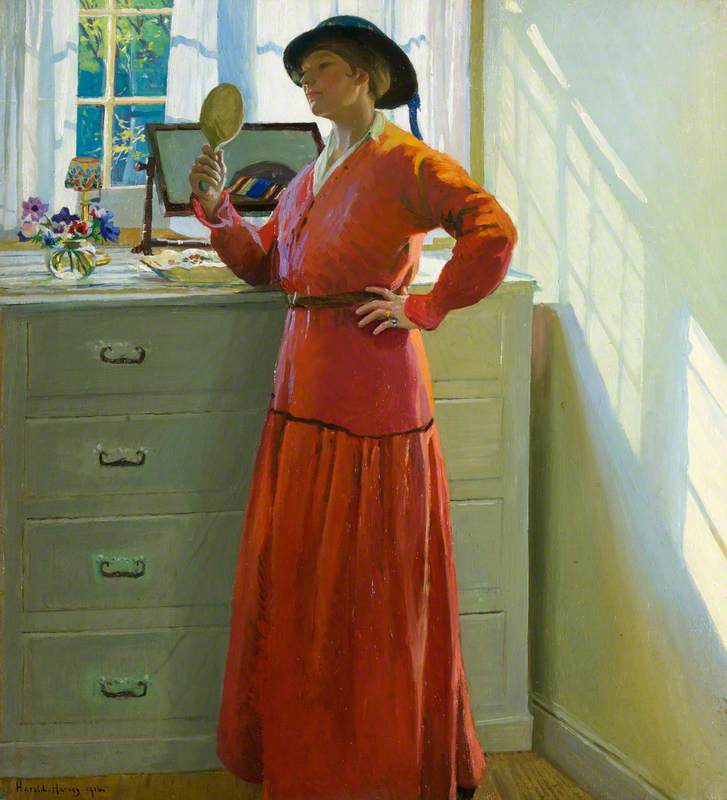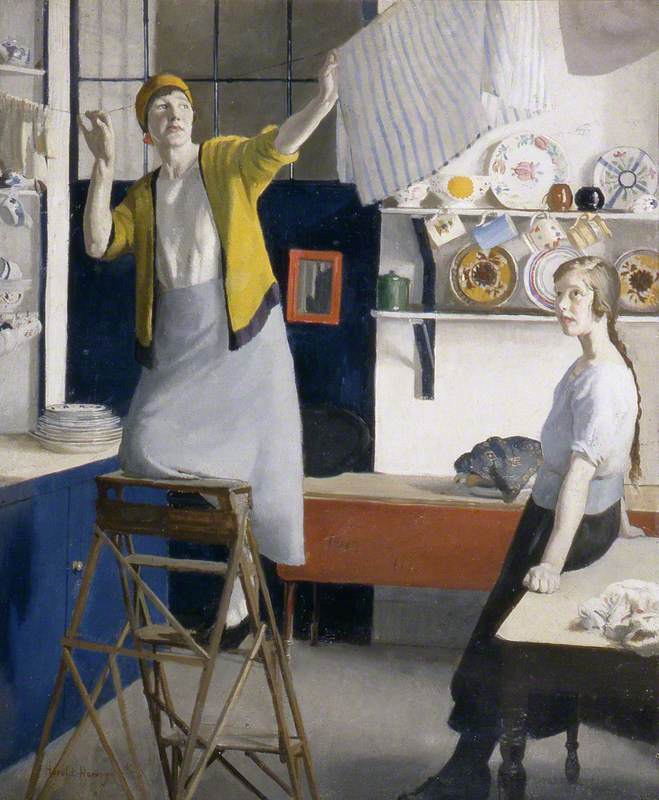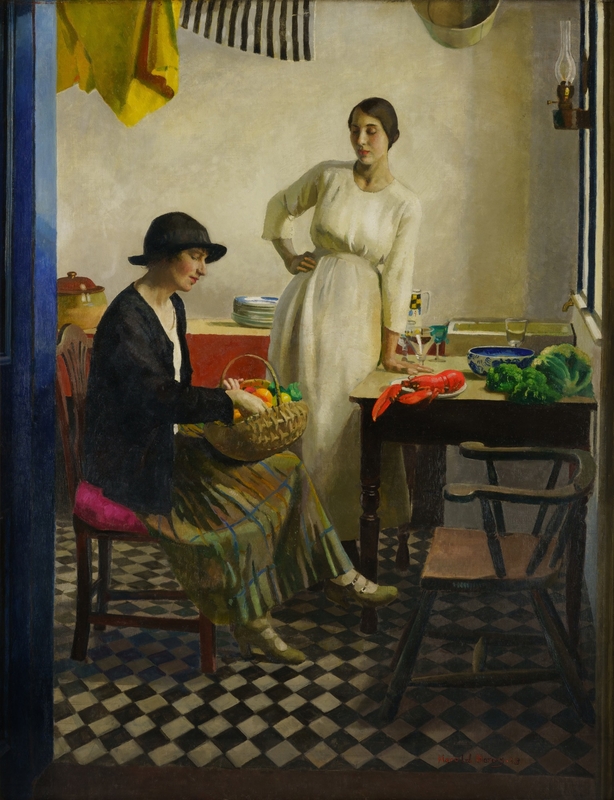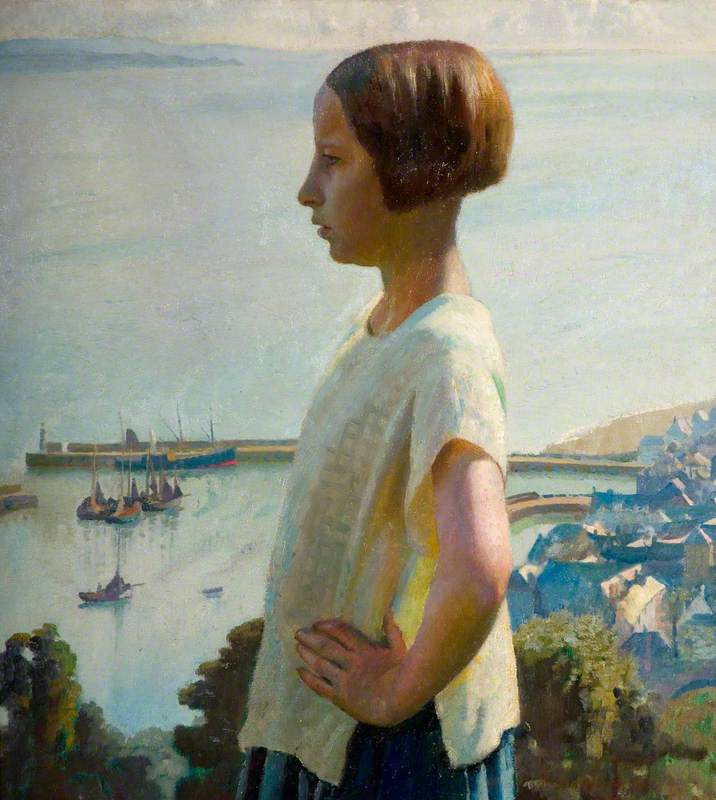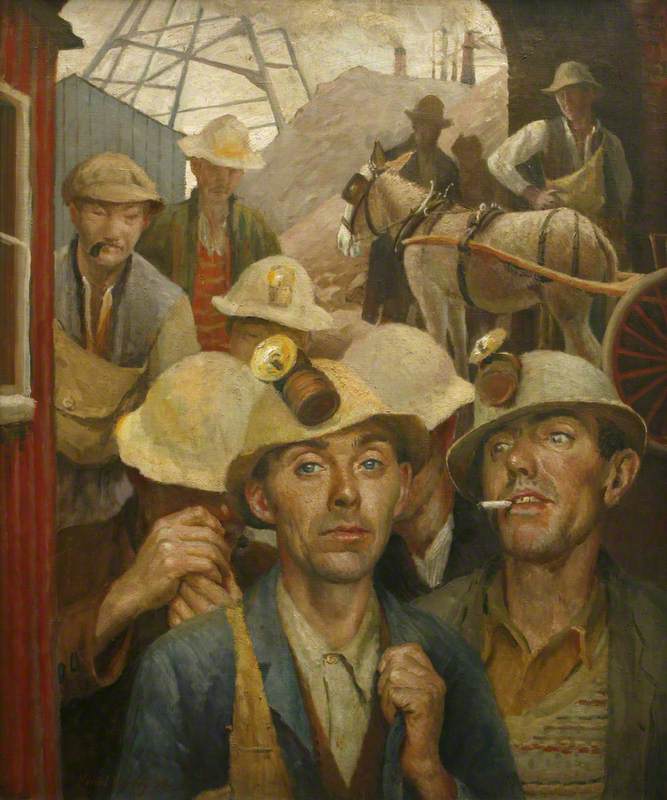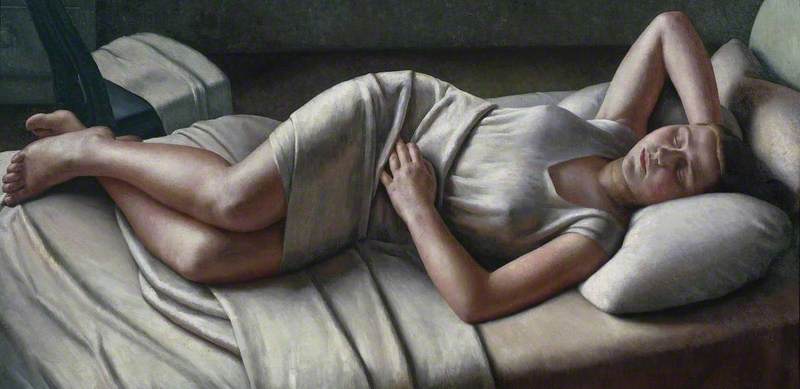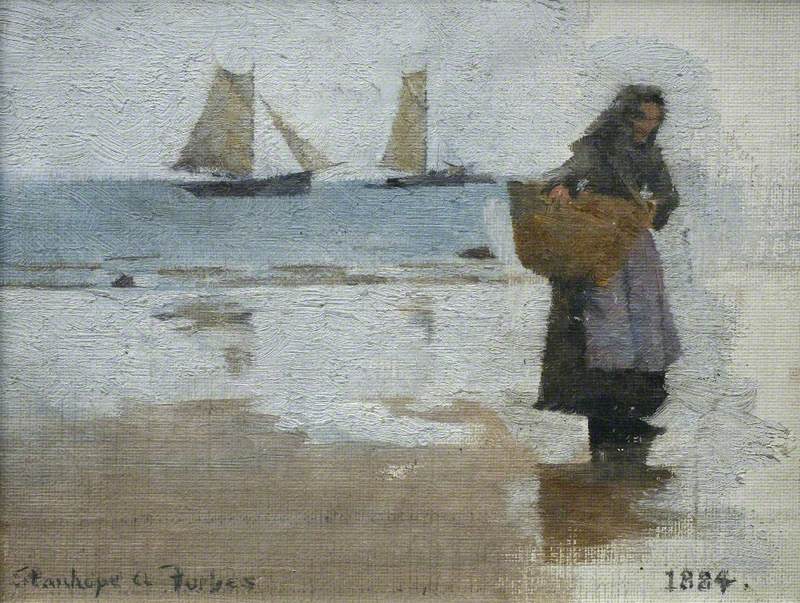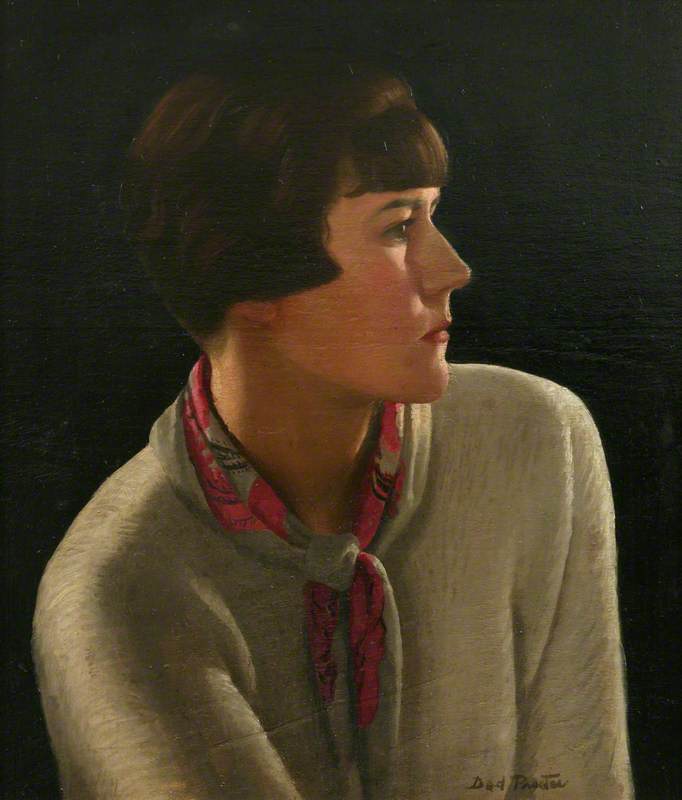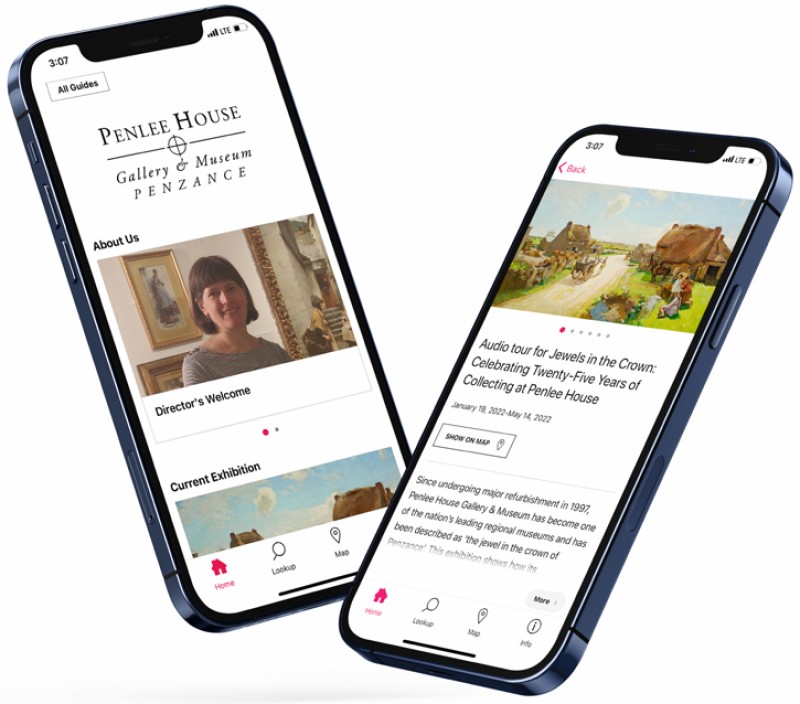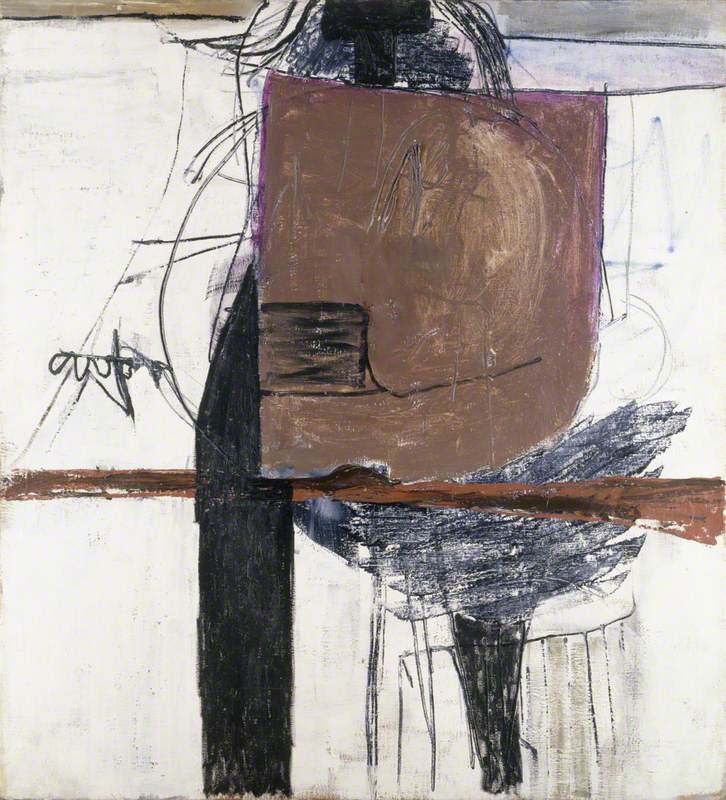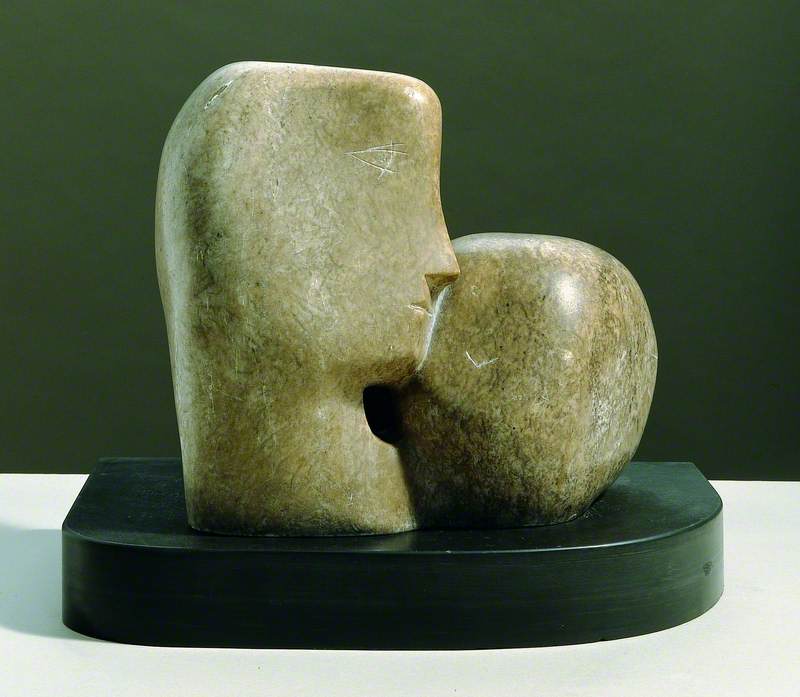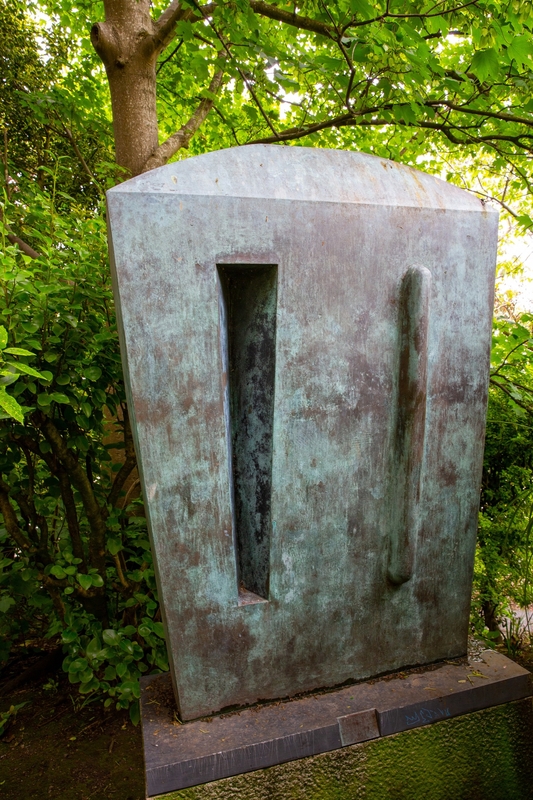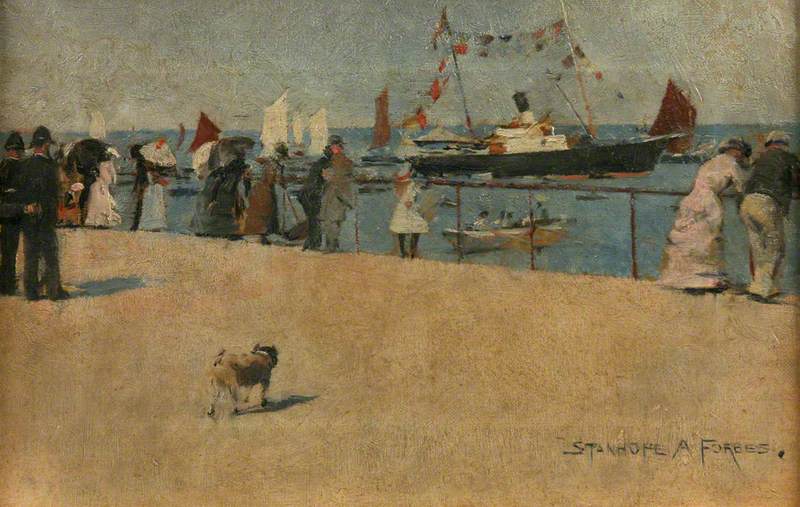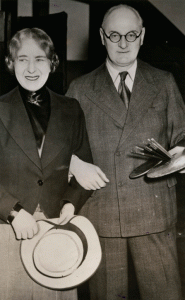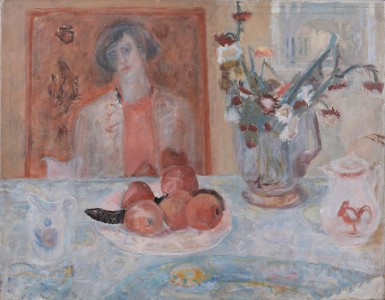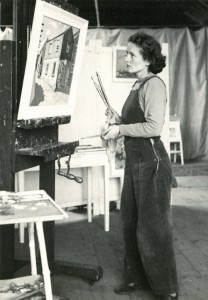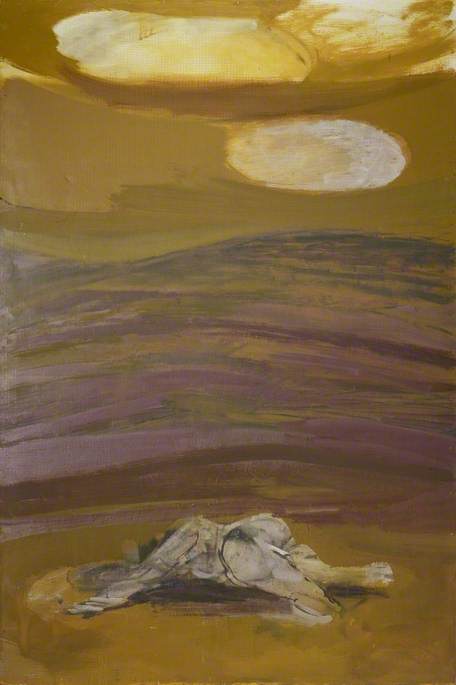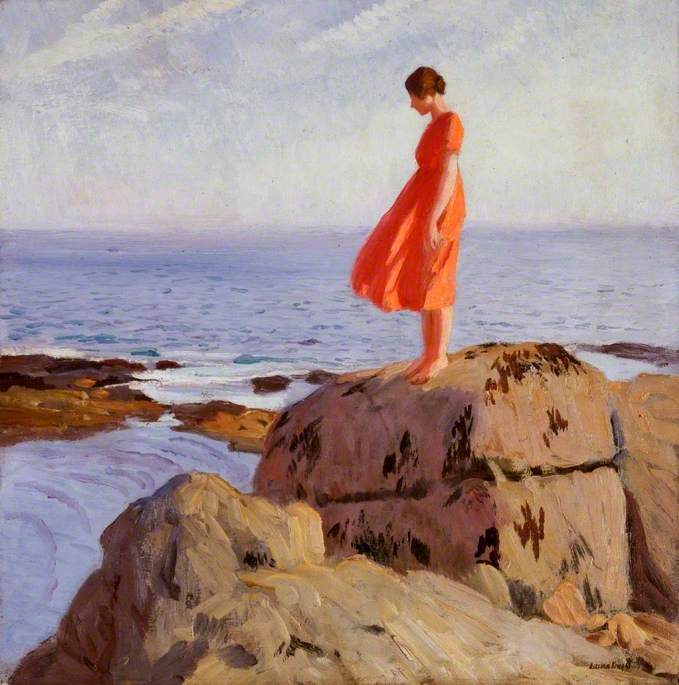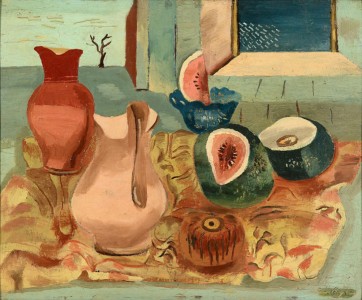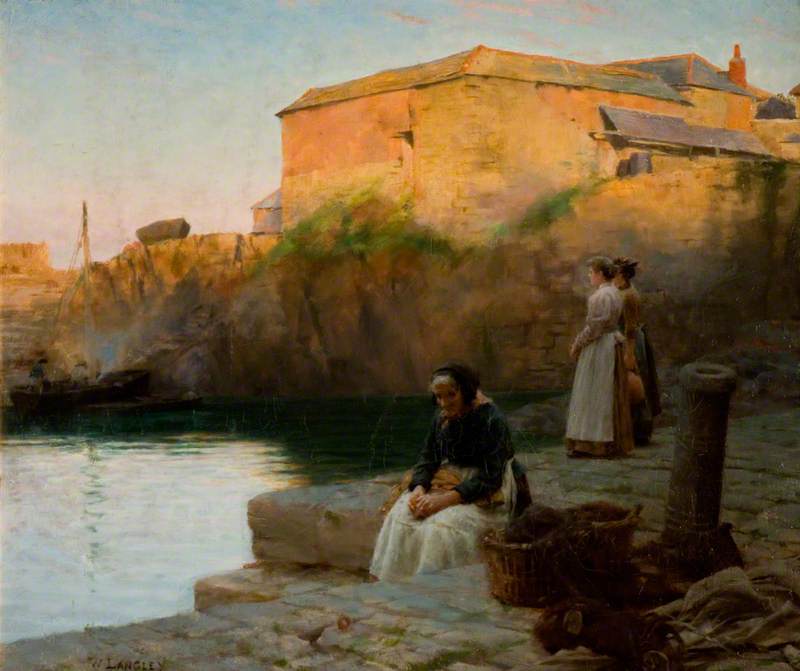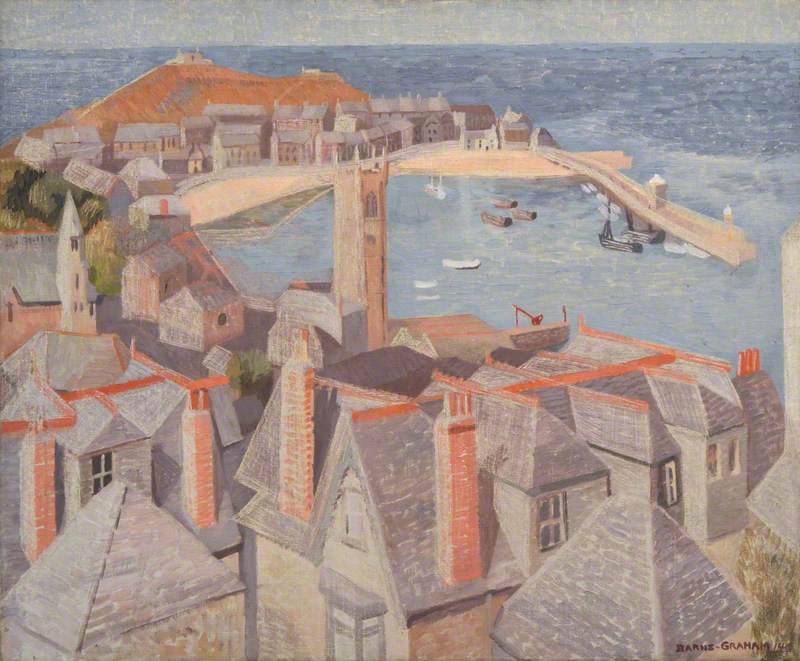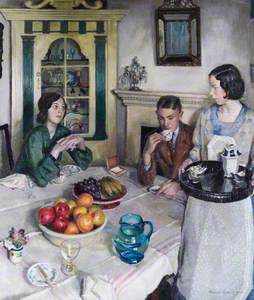Penlee House Gallery & Museum's exhibition 'The Exceptional Harold Harvey' has been staged to commemorate the 150th anniversary of the birth of the Newlyn School artist.
Harold Charles Francis Harvey was born in Penzance on 20th May 1874, less than a decade before the neighbouring village of Newlyn became one of the most important artistic colonies in the history of British art.
Growing up in Penzance in the 1880s, the young Harold Harvey must have been aware of the colony of artists in Newlyn. Like most of his contemporaries, he would have had childhood memories of watching artists from a distance, as they practised the very public art of painting en plein air ('in the open air').
The Newlyners' view was that the artists were 'as weird as fish', but to a youngster, they must have seemed wonderfully exotic. Harvey's background was far from artistic: his father worked in a bank and the family lived comfortably and respectably in an attractive Regency house in the centre of Penzance.
Harvey first studied painting at Penzance School of Art, where his tutor was Norman Garstin. Following in the footsteps of Garstin and many of the other Newlyn painters, he travelled to Paris, where he studied for two years at the Academie Julian. On his return, he settled to a quiet life in Newlyn, rarely travelling beyond the county border, concentrating on painting the Cornwall he knew intimately.
In 1895, Harold Harvey's work was exhibited alongside paintings by Walter Langley, Stanhope Forbes, Norman Garstin, Thomas Cooper Gotch, Caroline Gotch and many others at the inaugural exhibition at the Passmore Edwards Gallery, Newlyn. In 1898 he had his first work accepted by the Royal Academy and his career as an artist took off in earnest.

Image credit: Amgueddfa Cymru – National Museum Wales
The Artist's Model, Newlyn 1915
Harold Charles Harvey (1874–1941)
Amgueddfa Cymru – National Museum WalesHis early work is very much in the style of the older generation of Newlyn artists such as Stanhope Forbes and Norman Garstin. His painting of this period, like theirs, is influenced by French social realist painters like Jules Bastien-Lepage, and he followed the mantra of painting out of doors, and of making colour secondary to the tonal relationships within a painting.
Harold Harvey straddled both the first and the second generations of Newlyn artists, so, naturally, he should have taken inspiration from members of both.
While his early work is very much of the style of the founders of the Newlyn School, in the early 1900s the colony itself began to change and new influences made their mark. Laura and Harold Knight arrived in the village in 1907 and Ernest Procter and his later wife Doris (Dod) Shaw in the same year. Not far away, in the Lamorna valley, worked Samuel John 'Lamorna' Birch, Robert and Eleanor Hughes, Frank and Jessica Heath, and Charles and Ella Naper.
The new wave of painters were Harvey's generation. There was less than three years of age difference between Harvey and the ebullient Laura Knight, both in their early 30s when she moved to Newlyn. This new generation were inspired by the vibrant hues of Impressionism, 'a revelation… of a new world of colour…' as Frank Rutter wrote of a 1905 exhibition in London showing the work of Monet, Manet, Renoir, Pissarro, Degas and Cezanne... 'never before had we seen nature painted in all the prismatic radiance of summer sunshine'.
Harold Harvey joined the general trend towards brighter colours and bolder compositions. His increasingly close friendships with the Procters and the Knights resulted in the cross-fertilisation of ideas, with one artist influencing another in turn. No one artist can be said to have depended on another for inspiration, as there are examples of Harvey's paintings being echoed in later works by the other artists, as well as there being clear evidence of their influence on him.
Cornwall continued to be Harvey's chief inspiration and the vast majority of his work depicts ordinary Cornish people in their environment. His works were frequently shown in London and throughout the country, often exhibited under the title 'Pictures of Cornish Life'.
The artistic community in Newlyn had a lively social life, brimming with musical evenings, theatrical productions and summer picnics. It was probably at one of such social gatherings that Harold Harvey met a young Cornishwoman by the name of Gertrude Bodinnar, who also occasionally modelled for the artists. The two were to marry in 1911, maintaining a close and loving marriage for thirty years until Harold's death.
Gertrude and Harold Harvey set up home at Maen Cottage, Newlyn, high above the rest of the village, with a magnificent view of Newlyn Harbour, Mount's Bay and Penzance. Gertrude was proud of her house and garden, and Harold's love for his home is evident in his paintings. The house, the garden, the view and Gertrude herself all feature regularly in Harvey's work, although he also had a studio in the village.
In the summers leading up to the First World War, the Harveys joined the Knights and the Napers on month-long painting trips to Dozmary Pool on Bodmin Moor. The Knights also celebrated Armistice Day, 1918, at the Harveys' home, enjoying a bird's eye view of the firework display in Mount's Bay.
For all the artists, life changed dramatically during the First World War, not least because painting any part of the coastline became restricted, lest it provided information for invading forces. Through this time, Harvey concentrated on interior scenes, a phase of his work regarded by many as his best.
Gertrude frequently posed for her husband, but she was also a painter herself and shared several exhibitions with him. She is known to have painted landscapes and portraits, but is chiefly remembered for her paintings of flowers.
His marriage and home inspired Harvey in many ways. The arts and crafts items with which the couple had furnished their home frequently appear in his paintings. Gertrude's sister worked for the textile designer Alec Walker, who produced stunning printed silks and linens under the company name of Cryséde. These too feature in Harvey's work and are part of the exuberant enjoyment of pattern in some of his later paintings.
Harold and Gertrude lived in reasonable comfort, but they had no independent means and life was frugal when sales were sparse. Because Harvey needed to make his living by his art, he mainly produced domestic-sized works, not too expensive either to create or to buy, which was the surest way to produce a stable income. His work sold well, but there are several stories of paintings being accepted as payment in kind.
In 1920, Harvey and Ernest Procter started their own painting school in a large studio near the harbour. Their first advertisement in the November 1920 issue of Colour offered 'A New School, Harold Harvey & Ernest Procter, Newlyn; Figure, Still Life, Landscape; Open all the year; Oil & Watercolour; Particulars from either Principal, Newlyn, Penzance.' Among their pupils were Dorcie Sykes, Billie Waters and Midge Bruford – who all exhibited with Harvey at the Liverpool Walker Art Gallery in 1930.
In 1926, at the age of 52, Harold Harvey converted to Catholicism, and this was to inspire a new phase in his work. Harvey became a member of two religious bodies, the Penzance Catholic Men's Guild and the Confraternity of the Blessed Sacrament, and retained his faith to the end of his life. Gertrude, however, did not adopt Catholicism.
More and more in his later work, the paintings depicted, as one reviewer put it, 'people of no consequence': the ordinary people of west Cornwall, whether they were tin miners, clay pit workers or flower pickers. Usually, he would pose his models one at a time, so models appearing in the same painting did not actually meet one another. Frequently, the backgrounds were added afterwards, with the model having posed either in the studio or in a convenient outdoor location.
Harold Harvey died on Monday 19th May 1941 at his home in Maen Cottage, aged 67. Stanhope Forbes wrote '…Cornwall may indeed be proud to have produced so fine and sincere an artist.' Judging by the warmth of affection with which his work is held in his native county, Cornwall is still justly proud.
Edited by Katie Herbert, Curator/Deputy Director, Penlee House Gallery & Museum
'The Exceptional Harold Harvey' is showing at Penlee House Gallery & Museum in Penzance until 29th September 2024
